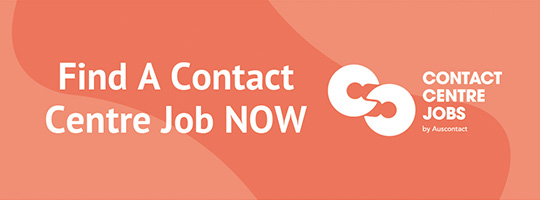Successful customer-centric businesses understand the critical role played by a robust CX Quality Assurance (QA) program.
Not only can QA guide continuous improvement in product and service knowledge, but it also focuses on the human elements of customer interactions. It helps agents align their behaviour with your organisation’s expectations. QA measures the things that agents can control. It provides a foundation for feedback, coaching, training, and professional development for the broader team.
Whilst we’ve seen many organisations take the implementation of a QA program seriously, often they have opted for internalising these programs. And why not? If you have the resources and the expertise, it makes sense to run internal QA monitoring. Doesn’t it?
The Pitfalls of Internal QA Programs
Unconscious bias
There is a genuine obstacle that stands in the way of all internal quality programs: the fact that we are all human.
Unconscious bias is impossible to fully negate. Team leaders get to know personalities, nuances, and unique circumstances of their staff. They have people they get along with and others they don’t and it’s incredibly difficult to separate personal knowledge and relationships when assessing the quality of someone’s work, so as not to influence scoring.
As humans we also have an intrinsic desire to present ourselves in the best light. A quality assessor may well, however unconsciously, accept less than best practice from their team to appear more efficient and effective in their role. There is also potential for leaders – particularly new leaders who lack experience – to want to avoid conflict, often not addressing underperformance or areas that could do with some guidance and coaching.
Problems with scoring
Whist inconsistency with scoring can sometimes be attributed to unconscious biases of individual assessors, it can also be caused by another common issue with internal QA programs – assessments using sliding scales of performance. These can result in dramatically inconsistent overall scores, depending on who is making the assessment.
Scoring applied to some QA checklists that are used can also be problematic. Scores are often arbitrarily assigned, with minimal consideration to the impact on the overall result. In some cases, the weight given to compliance versus customer experience measures is disproportionate while in others, key behaviours are weighted equally with basic expected behaviours. For example, basic greeting skills may be given the same weighting as more impactful behaviours, such as asking effective questions to understand the unique nature of the customer’s enquiry.
Anecdotal evidence from conversations with customer service agents suggest that some are genuinely distrustful of internal QA assessment, because of inconsistency in scores.
Limitations of Quality Checklists
QA checklists can also cause other issues. They are often condensed into a small number of scored measures, encompassing various behavioural elements and expectations. This has several downsides: it burdens assessors with more cognitive load and time spent, increases inconsistency over time and among assessors, and reduces the ability to provide specific feedback and coaching.
Additionally, these checklists often don’t distinguish between customer-centric measures and those for compliance or governance. Failing to differentiate key measures hampers their usefulness for coaching and professional development. These QA checklists often leave little room for actual improvement by setting low expectations or focusing on minimum standards rather than best practice which can inevitably lead to pretty good QA scores, without any stretch targets to support genuine improvement.
The compilation of QA assessment data remains an issue for many internal QA programs. Sometimes this is due to the laborious and inefficient need for assessments to be completed manually, in other cases access is limited to data collection systems for a single channel. This means QA results are only looked at as one-off assessments. This limits the ability to track performance trends across teams, individuals, or channels, depriving teams of valuable insights.
Inadequate quality feedback and coaching
A fundamental aspect of best practice QA is providing agents with quality feedback and training. When agents receive constructive feedback and targeted coaching, they not only become more proficient in their roles but also feel valued and supported. Their sense of growth and development is a strong motivator for people to stay with their current employer.
But team leaders are busy people, with multiple, often conflicting priorities. So, it’s no wonder quality monitoring, feedback and coaching are often the first things to go on the backburner. And when they are completed, in many cases quality monitoring efforts are focused on process, compliance and governance measures, rather than the quality of customer interactions.
In addition, particularly in contact centre environments, team leaders and agents are often measured on operational KPIs such as queue length and handling times. While these are important metrics for resourcing, they are not always aligned with enhancing the quality of customer interactions.
Just monitoring performance to point out errors or meet compliance requirements, or to produce a score that sits dormant alongside other KPIs is fruitless. Effective quality programs are an active part of the work environment. They should drive a culture of continuous improvement and professional development, helping teams do better for customers and organisations in turn.
High quality customer interactions do not have to come at the expense of efficiency – more time with a customer does not directly translate to a better interaction. But to achieve both, agents need support and coaching to better manage interactions that efficiently guide customers to the desired outcome, while maintaining trust and loyalty.
So, What’s the Best Practise Alternative?
A best practice QA program from an expert external partner is not only essential for enhancing the customer experience, eliminating issues such as unconscious bias, and scoring inadequacies, but crucially it plays a pivotal role in reducing staff churn.
Employee turnover can be a costly issue for organisations. High turnover rates lead to increased recruitment and training expenses, disrupt operations, and negatively impact the customer experience.
An external, objective QA program provides:
Professional Development: These programs identify specific areas for improvement in individual performance, enabling these to be addressed through coaching and training. Leaders can focus on proactive improvement, rather than reactive measurement. This leads to more skilled and confident agents, enhancing job satisfaction and motivation to stay.
Objective Evaluation: QA assessments are conducted objectively, eliminating the influence of personal biases. This process instils a sense of fairness among employees, fostering loyalty to the organisation.
Enhanced Skills: Ongoing QA helps agents develop their skills over time, making them more versatile and in turn more valuable employees. This investment in their growth encourages them to remain with the company.
Supportive Environment: QA programs that focus on improvement rather than punishment create a positive and supportive work environment for employees.
Consistency: A well-structured QA program ensures consistent performance evaluations, boosting agents’ confidence in the fairness of the system and their own ability to succeed.
Ultimately, the optimal approach to Quality Assurance is not internal assessments. Investing in an external QA program proves it’s worth through increased customer satisfaction, improved employee retention and overall business success.
Paul van Veenendaal
Paul van Veenendaal is the Managing Director at CSBA – a Customer Experience (CX) industry leader, highly recognised for its expertise in helping clients through its bespoke and syndicated research, strategy, and training programs. He is a CX expert who excels in helping organisations build strong foundations in the three critical pillars of success, ease and sentiment.







Comments are closed.